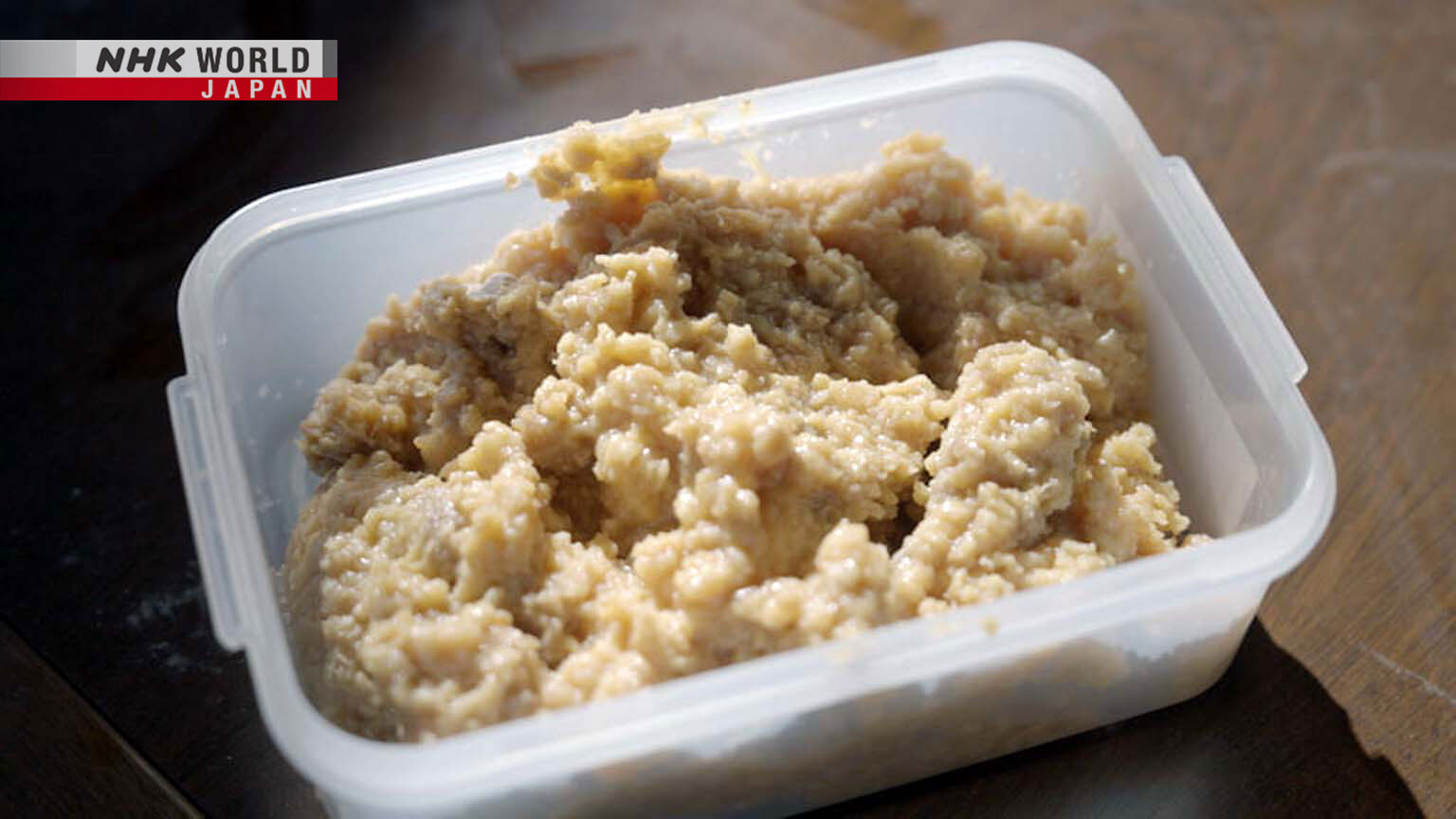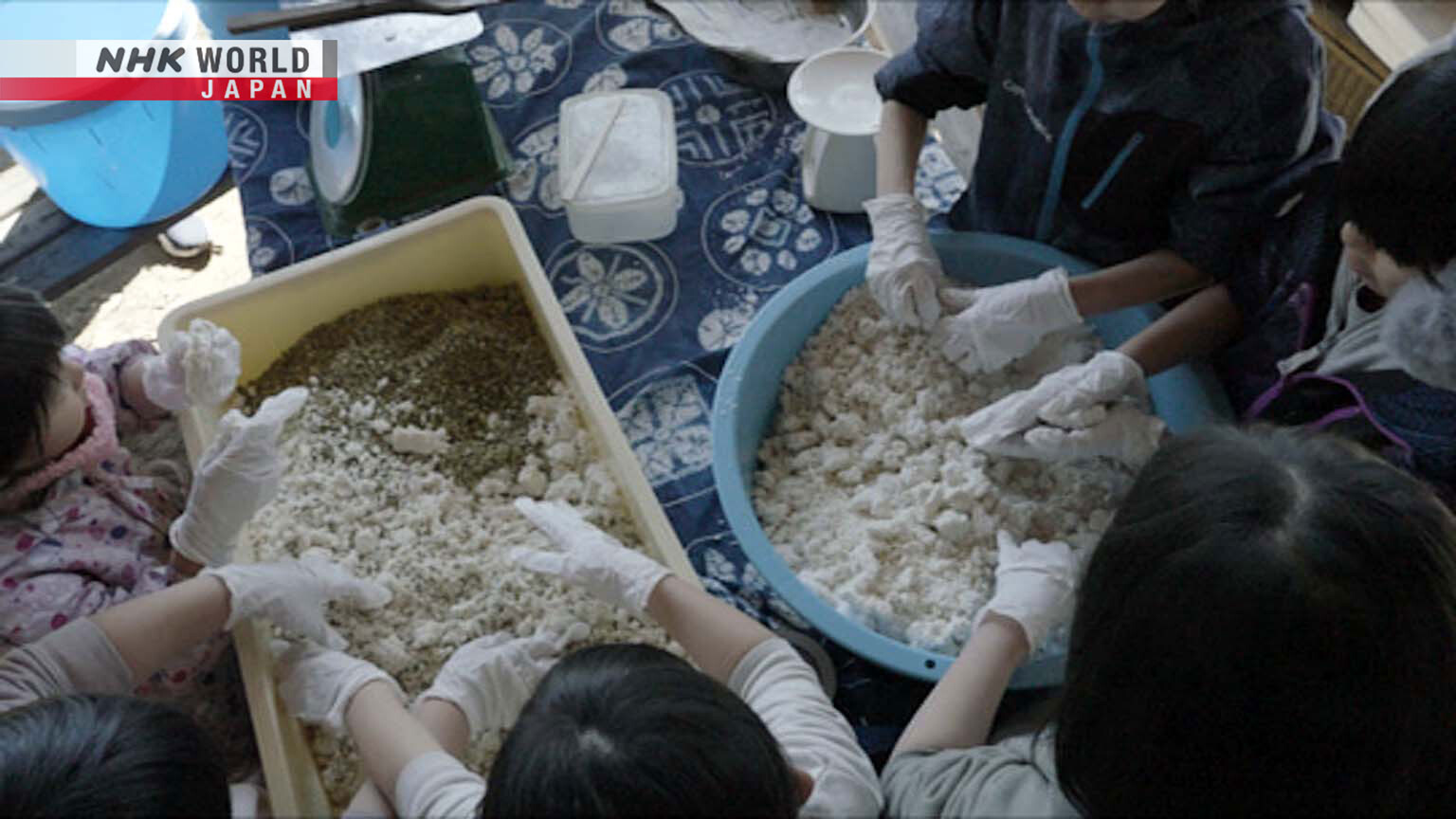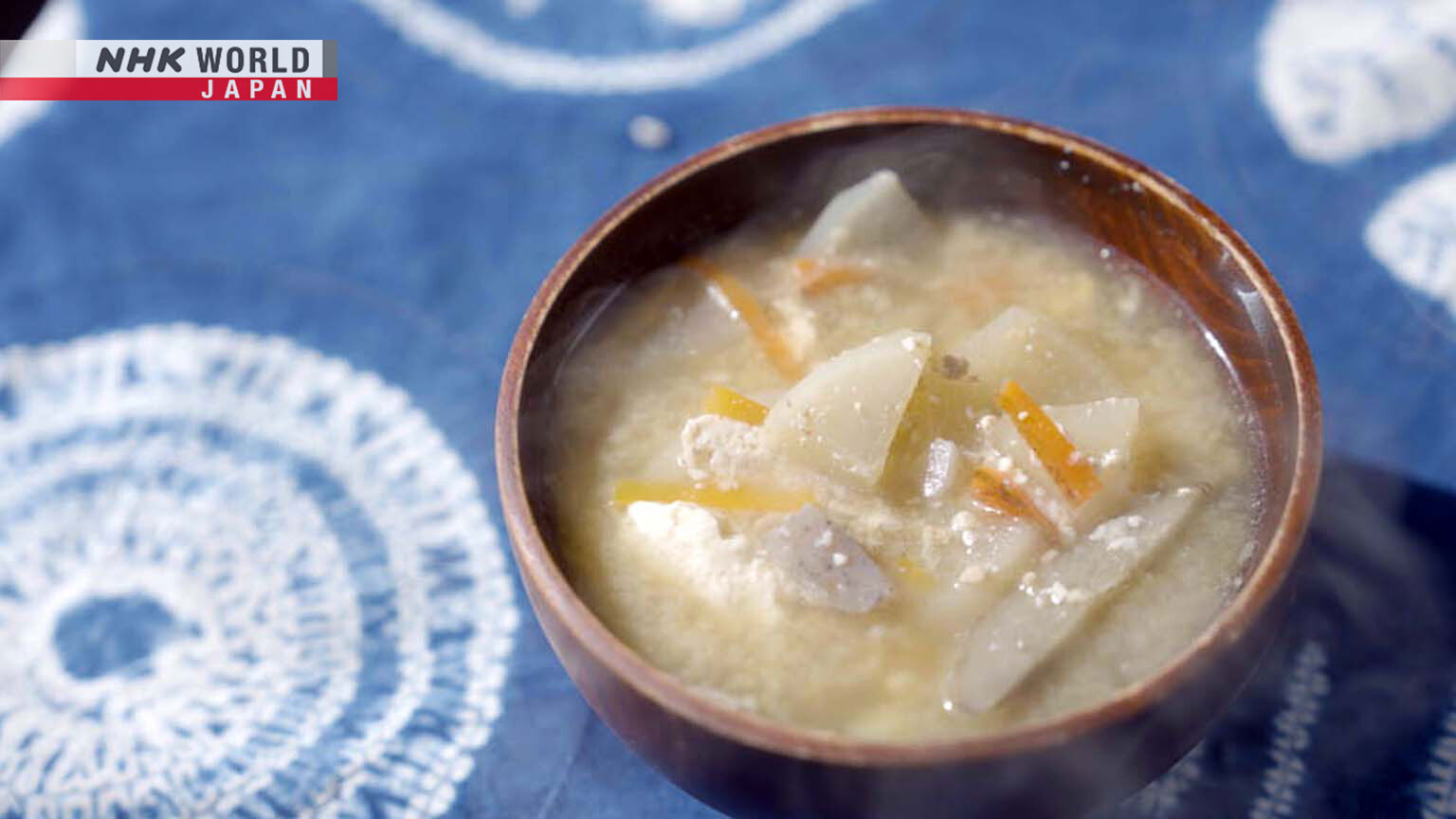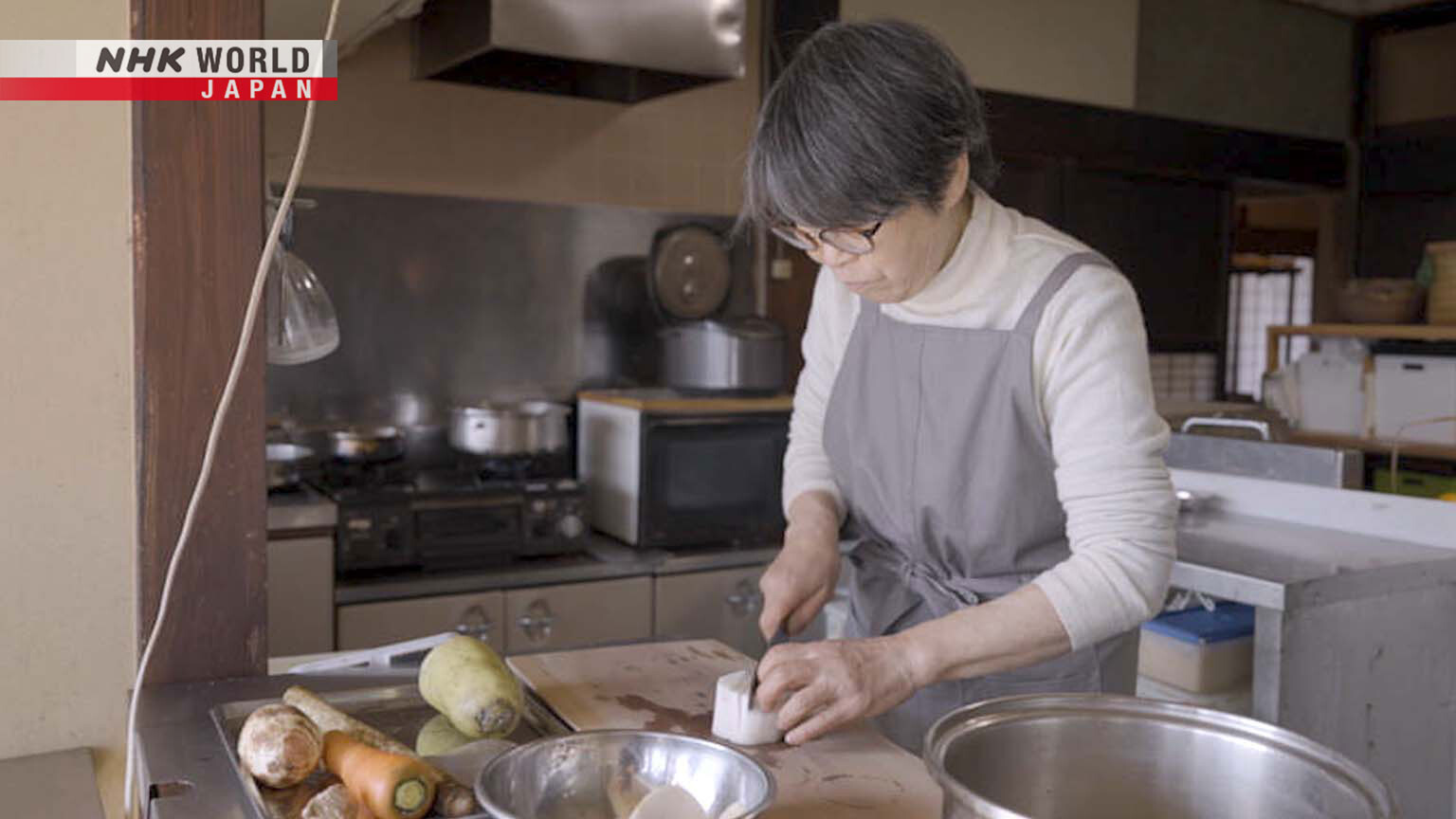The Joy of Soy
Junko lives with her cat among the mountains of Nagano Prefecture. She runs a restaurant specializing in soybeans, and passes on her methods to the local children.




Transcript
All is calm among the mountains of central Japan.
And there's one woman who wouldn't have it any other way.
Miku!
She harnesses nature to explore the origins of Japanese cuisine.
Let's follow her story by looking through the kitchen window.
Chino City is nestled among the peaks of Nagano Prefecture.
And come the end of February, there's still a deep chill in the air.
But Ariura Junko doesn't mind.
She hails from Tokyo, and started a new life here in 2011.
She lives by herself in a 140-year-old house, which she's turned also into a restaurant.
Junko did the interior, even making the ornaments.
She has two-year-old Miku for company.
And they enjoy a simple lifestyle from yesteryear.
No TV.
No air conditioner.
This is my favorite spot.
I can feel the seasons changing when I spend time here.
Come March, you'll see beautiful yellow flowers. A type of Adonis.
They give me a sense of relief.
Like, I've finally made it through another winter!
Junko moved here to get back to the roots of Japan's culinary traditions.
She uses locally grown organic vegetables.
This is a soup of sake lees. An everyday kind of dish.
The lees from brewing sake have long been dissolved in hot water to make soup.
It's a winter treat.
She pairs hers with "onigiri" rice balls.
It's a simple lunch. But it's also delicious.
Junko pickled the "umeboshi" plum and vegetables.
All is homemade.
I make my "umeboshi" and seasonings using traditional methods.
And I want to pass on these healthy dishes to the next generation.
I'm not talking about anything fancy. I just don't want people to forget.
There's one ingredient Junko can't do without.
Soybeans.
They're rich in nutrients, and a staple of Japanese cuisine.
And she knows a thing or two about them.
Junko previously ran a soy-based deli for years.
Her nutritional and seasonal dishes are now popular in Chino, too.
Here, she's making soy milk by grinding the beans into a paste and adding water.
She then pours it into this steel contraption to produce a dish dating back 800 years.
Warmed soy milk produces a thin film.
It's called "yuba."
It's delicate, and oh-so simple.
Here come some customers.
- Hello.
- Welcome!
Thank you for coming.
Junko covers everything herself, from the cooking to the serving.
That's why she only accepts up to eight customers a day.
- We've been here many times.
- About once a month.
Here you go.
Salmon and dried persimmon wrapped in "yuba."
And deep-fried "yuba" wrapped around lotus root.
Junko is full of ideas.
She wants her customers to enjoy simple yet nourishing ingredients.
I think they get a sense of comfort by remembering the good old days.
Maybe my dishes taste like things they had a long time ago.
And maybe that's why they keep coming back.
Junko often visits her storehouse to take loving care of a cherished ingredient.
Miso, or fermented soybean paste.
Japanese people have been eating it for 1,300 years.
There are many varieties, basically made with a type of rice mold called "koji."
Miso is a fundamental part of Japanese cuisine.
And it makes great soup.
Junko has been producing her own miso for more than 40 years.
And these days, she really goes the extra mile to ensure it's as tasty as possible.
She's arrived at a natural hot spring.
You can drink this water.
Junko uses it to rehydrate dried soybeans.
It's her unique method.
I've been doing this for some time now. It gives the miso a nice flavor.
Junko sometimes holds a miso-making workshop.
And she's preparing for one now.
The participants will be coming tomorrow.
It's a lot of work.
But she firmly believes in teaching people about the power of good old-fashioned Japanese food.
Junko has raised three sons as a single parent.
Three boys. The youngest had severe allergies.
He could only eat four things: carrots, apples, mustard spinach and millet.
But Junko was convinced he could be cured.
So she kept on serving him meals without any agricultural chemicals and additives.
And she says the allergies gradually subsided.
The experience only fortified Junko's belief in the benefits of traditional meals.
Here come some kids.
They're the participants of today's workshop.
Great to have you!
Many children these days are glued to their smartphones.
But today, this young gang are getting a taste of how things used to be.
It's time to start making miso.
The key to fermentation lies in the "koji."
Here, it's been allowed to thrive on a batch of locally grown rice.
The process also needs salt.
About half the quantity of the "koji."
Time for the children to dive in.
Loosen the "koji" into little pieces, and mix well with the salt.
Salt slows the speed of fermentation.
And that allows the miso to age better.
The soybeans are boiled, then minced.
- "Is it fun rotating that?"
- Definitely!
The soybeans and "koji" must be thoroughly mixed to bring out what's known in Japanese as the umami.
You can make it to your liking. It'll always turn out well.
If you have 100 people, there'll be 100 different kinds of miso.
The ingredients are shaped into balls to release the air within.
It keeps the mold at bay.
Watch this.
Just like that.
And to really get the air out, the kids are encouraged to use a little power.
Next, the mixture should be covered to stop the air getting back in.
Also put some salt in to prevent mold.
The prep is done.
And the ingredients must now sit for a whole year.
Children these days enjoy making miso. And that makes me happy.
Or course, the workshops come with a hearty bite to eat.
This time it's "tonjiru" - a soup of pork and junko's miso.
It's an excellent treat, also filled with seasonal vegetables.
Let's eat!
I want to continue passing the customs of our ancestors on to young people.
And I hope these children will eventually do the same.
Good food always brings people together.
And Junko believes that should never change.
- Junko!?
- Coming!
The seasons are turning at this quaint old house.
These yellow flowers pop up in the blink of an eye.
Spring is on the way.